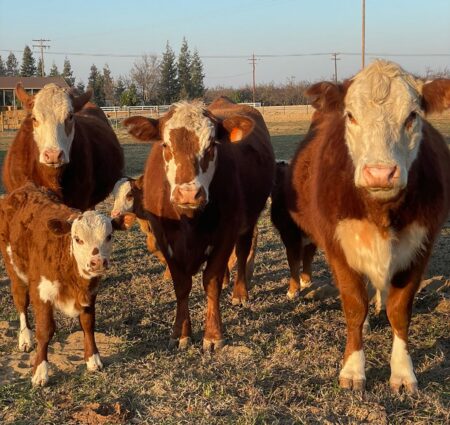Rarely does an advance come along that has such an impact that it changes agriculture, let alone sets a standard for future tractor design.
Such was the case with Irishman Harry Ferguson’s Type A tractor. Not that the Type A was an exceptional leap forward in tractor technology by itself, although it certainly was a solid machine. Rather, it was the device at work on the back of the tractor — a hydraulically powered three-point hitch — that made history.
When the Type A and its hitch system were introduced in 1936, all of tractordom took notice. The chief admirer of Ferguson’s innovation was Henry Ford, who collaborated with Ferguson to create the Ford-Ferguson Model 9N. Three additional N series Fords were introduced in ensuing decades, all featuring the Ferguson hitch.
Ferguson launched his own tractor line when his relationship with Ford went sour.
Over 800,000 Built
All told, over 800,000 tractors were eventually manufactured by Ferguson and Ford based on the Type A’s basic design. This accomplishment ranks the tractor and its offspring as one of the most popular tractor series ever built.
Hitch System Not New
To put matters in perspective and to correct some current myths, Ferguson did not create the integral hitch system from scratch. The Irish inventor certainly perfected it, however!
So much so that all three-point hitches in use today reflect Ferguson’s basic design. Engineers had been working since the early 1900s to create a method so implements could be mounted on tractors rather than just hitched to a drawbar. The advantages to this approach were numerous.
There was a benefit in the ability to more easily transport implements down the road. Also, integrally mounted implements transferred the weight being created from the tools engaging with the soil. That weight came to bear on the tractor’s drive wheels, which promoted tractive efficiency.
Ferguson took notice of these advantages when working on plow designs as a young engineer at the Irish Board of Agriculture in 1919. He subsequently designed a plow equipped with its own linkage that mounted to the back of a tractor. The design evolved into a linkage consisting of two parallel arms, one located above the other to form a semirigid hitch between the plow and tractor. The beauty of this approach was that the plow would rise and drop to match the up-and-down movement of the tractor’s rear wheels.
Ferguson Institute
Fergies In Antarctica
The first overland crossing of Antarctic via port of Ferguson model TE-20s that had been modified with tracks to take on the arduous task. When faced with transporting 500 tons of supplies from the landing ship to his base, the Commonwealth Trans-Antarctic Expedition’s leader, Sir Edmund Hillary, contacted Harry Ferguson proposing the use of his tractors for the effort.
Ferguson set about fitting the TE-20 with a full set of tracks and also painted them red so they could be more easily spotted in the snow. Other than getting heavy-duty batteries, little else changed on the tractors. Three of the modified tractors (shown above) completed the three-month, 1,200-mile journey, often working in temperatures that reached down to -30°F. One of the actual Ferguson TE-20s (named Sue by the team) used on this remarkable expedition is now in the Massey Ferguson Technology Centre in Beauvais, France.
Plows for Fordson
Ferguson’s plow made it to market due to purchases for use on Fordson tractors. So Ferguson turned his attention to another novel idea: equipping tractors rather than implements with integral hitches. He envisioned a hitch system that allowed farmers to easily lift implements out of the ground without using human effort.
Ferguson first experimented with a mechanical system driven from the tractor belt pulley. He later played with an electric motor, but that concept proved too expensive.
Hydraulic Pump Driven off the Transmission
Eventually, he settled on using a pump driven off the tractor’s transmission that would propel oil to hydraulic rams. These rams would raise or lower lifting linkage. Ferguson’s first hitch design involved three links attached to the rear of the tractor. This approach employed a single lower link and two upper links. The lower link controlled the operating depth of the implement, while the two upper links lifted or lowered the implement.
That approach was quickly scrubbed because it lacked strength. The placement of the arms was reversed. The single link was moved up and became what is now popularly called the top link. This change proved very effective at allowing farmers to readily adjust the fore and aft operating depth of an implement in the field, which greatly improved the quality of tillage in the field.
Next Came the Tractor
Dave Mowitz, Ron Van Zee
Ferguson’s dream design was a reality, and he set about creating a tractor to go with the invention.
His first Type A tractors were ready by May 1936. The 20 hp. machine was, at first, built by David Brown Tractors. That relationship ceased in 1939. Ferguson had already held his fateful meeting with Henry Ford, the one in which he demonstrated the Model A. Prototypes of what would become the Ford-Ferguson Model 9N were on hand by March 1939, and manufacturing began later that year.
European Success
That Ferguson and Ford would part company is a story itself. Suffice to say, Ferguson aimed to show Ford up by launching his own tractor. Ferguson did just that with the model TE-20.
The tractor was such a success in Europe, Ford salespeople began to refer to it as “the Grey Menace.” Menace indeed! Over a half million Grey Fergies would be produced in just a decade.


:max_bytes(150000):strip_icc()/SD-Rep.-Karla-Lems-1.27.25-_-SD-Searchlight-1536x1061-43450fcbaa63441a96372532427da33c.jpg)
:max_bytes(150000):strip_icc()/chickensontub_kezar-58fe861947a9474bb2565e7a9c38bbfe.jpg)
:max_bytes(150000):strip_icc()/ferguson2-dd247424086045da9081035b12ce644d.jpg)


:max_bytes(150000):strip_icc()/BloombergContributor-2195977910-ec5632ff94e742e0a3f48309cc163606.jpg)
:max_bytes(150000):strip_icc()/USDA20Barn-2000-a7fd1095b1ef45a3a9c1e599b3e32c4b.jpg)
:max_bytes(150000):strip_icc()/SUELFLOW.090-2-3b47d6dad05d4c9b9e21f09ca1720417.jpg)
